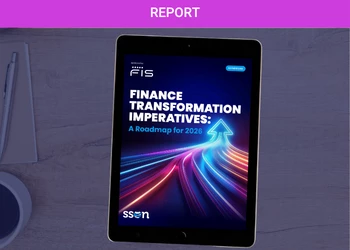CFOs as Storytellers: 5 Top Tips for Transforming Data into Influence
Add bookmark
At The Future of Finance & CFO Virtual Summit, Rajiv Subramanian, Head of Finance, Strategy & Technology at Nokia, shared insights on how CFOs can evolve into powerful storytellers. He emphasized that storytelling isn’t about exaggeration, it’s about clarity, connection, and action. By mastering the art of storytelling, CFOs can transform raw data into compelling financial narratives that inspire business success.
Here are 5 top tips to help CFOs harness the power of storytelling to influence their organizations:
1. Focus on the Fundamentals:
To turn data into impactful storytelling, it’s essential to focus on three core principles:
- Clarity: Narrow down the data to key insights that matter most.
- Context: Understand how the insights connect to the broader business priorities.
- Connection: Inspire action by making the story urgent, relevant, and compelling.
By simplifying complexity and aligning stakeholders, CFOs can create a narrative that accelerates outcomes and drives long-term business value.
2. Leverage Your Unique Position as a CFO:
CFOs are uniquely positioned to be impactful storytellers because they have access to all the data across the company. This gives CFOs a holistic view of the business, enabling them to connect the dots and show the bigger picture. As a trusted advisor, CFOs can shape the future of the business by framing data in a way that aligns with strategic goals and inspires action across the organization.
3. Create Financial Narratives That Drive Business Success:
Storytelling isn’t just about reporting numbers—it’s about turning those numbers into financial narratives that guide decision-making. Rajiv highlighted two key case studies that demonstrated the power of storytelling. In one example, storytelling helped the company go from being the least profitable in the industry to the most profitable, thanks to laser-sharp focus on big projects, continuous improvement, and a clear business model framework. In another case, impactful storytelling in IT cost reductions helped build transparency, challenge perceptions, and foster a cost-conscious culture that earned the trust of stakeholders.
4. Be Consistent, Especially in Uncertainty:
In times of uncertainty, consistency becomes even more critical. CFOs should focus on the factors that remain constant, such as profitability and value, and make those elements the foundation of their stories. This helps guide the organization through uncertainty and provides a stable path forward. By maintaining consistency in messaging, CFOs can keep stakeholders aligned and focused on long-term goals.
5. Master the Art of Preparation and Delivery:
To refine your storytelling skills, Rajiv recommends a structured approach:
- Specify: Align with stakeholders to define key business challenges.
- Tailor: Use the three storytelling fundamentals to craft a compelling narrative.
- Organize: Prepare a Word document and PowerPoint presentation to outline the story.
- Rehearse: Present the story to senior-friendly colleagues to gather feedback.
- Yes: Continuously polish your narrative until it’s strong enough to pitch to the wider organization.
By practicing and fine-tuning your storytelling techniques, you can turn financial data into a powerful tool for driving business strategy and influencing key decisions. To gain more insights from our SSO Network, please join us for our upcoming Finance Transformation Virtual Summit.


























